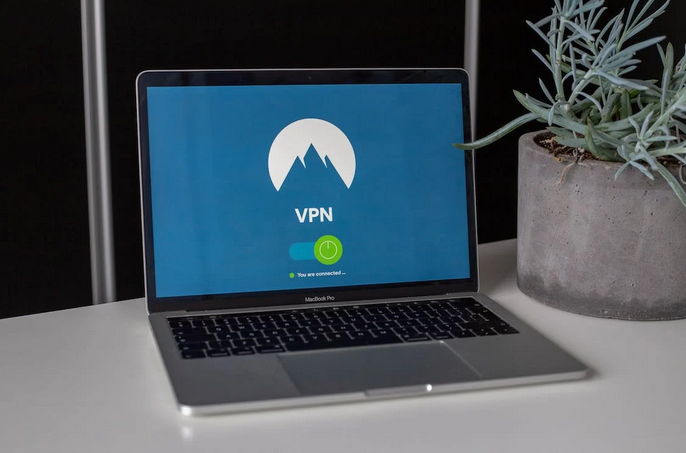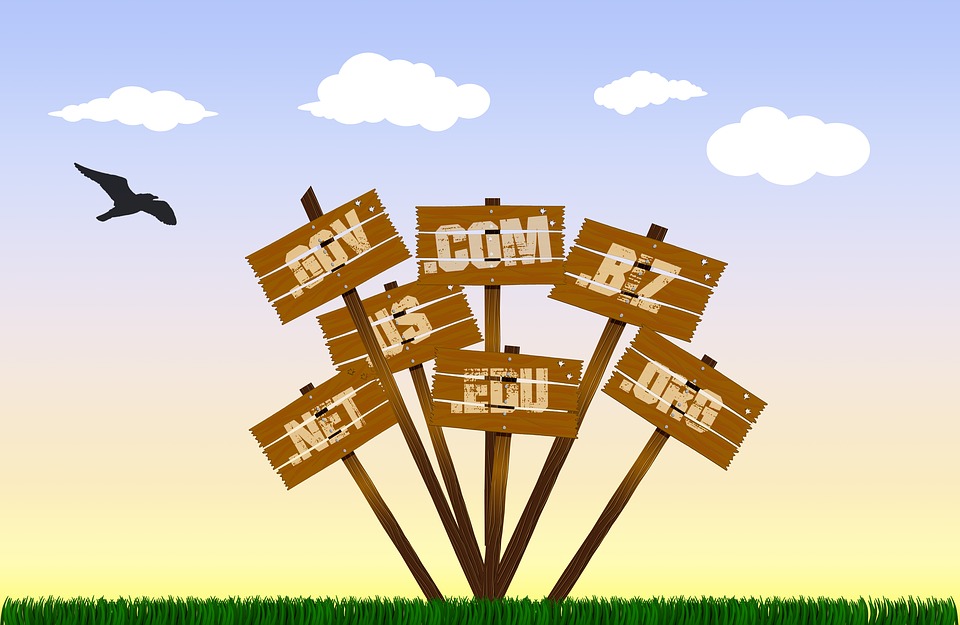Why Tech Burnout Is the Silent Epidemic in Remote Work

As we navigate the digital landscape of remote work, a silent epidemic has emerged: tech burnout. It creeps in unnoticed, often disguised as fatigue or stress from long hours spent behind screens. In an era where technology drives our professional lives, it’s easy to overlook the toll it can take on mental health. The boundaries between work and personal life blur, leaving many overwhelmed. With constant notifications, virtual meetings, and endless emails, the pressure mounts. While technology offers us incredible tools for productivity and connection, it also demands our unwavering attention. As remote workers adapt to this new normal, understanding tech burnout becomes essential for maintaining well-being amidst the chaos. Let’s dive deeper into what tech burnout entails and uncover practical strategies to combat this growing challenge in our increasingly connected world.
Understanding Burnout and Its Effects
Burnout is more than just feeling tired after a long day. It’s a state of emotional, physical, and mental exhaustion caused by prolonged stress. When individuals are pushed beyond their limits without adequate support or recovery time, burnout can set in. The effects range from decreased productivity to heightened anxiety. It can cloud judgment and diminish creativity, making even simple tasks feel overwhelming. Relationships suffer too; communication with colleagues may break down as frustration mounts. Many overlook the signs until they reach a breaking point. This silent struggle often leads workers to disengage completely from their roles, impacting not only personal well-being but also team dynamics and company culture. Understanding the nuances of burnout is vital for addressing it effectively—especially in remote work environments where isolation can amplify feelings of disconnection and fatigue.
Factors Contributing to Tech Burnout in a Remote Setting

Remote work offers flexibility, but it also blurs the lines between personal and professional life. This constant connectivity can lead to overwhelming expectations. The reliance on technology creates a unique pressure. Employees often feel they must respond immediately to messages or emails. This urgency contributes significantly to stress levels. Isolation is another factor at play. Without face-to-face interactions, remote workers may feel disconnected from their teams. Loneliness can exacerbate feelings of burnout over time. Distractions in home environments add another layer of complexity. From household chores to family responsibilities, these interruptions can hinder focus and productivity. The lack of structured routines makes it harder for individuals to disengage from work. As boundaries fade away, the risk of tech burnout increases substantially in remote settings.
Signs of Burnout and How to Recognize Them
Burnout can sneak up on you, often disguised as stress or fatigue. Being aware of its signs is crucial for early intervention. One common indicator is a constant feeling of exhaustion that doesn’t improve with rest. You might find yourself losing motivation and interest in tasks you once enjoyed. Another sign includes irritability or mood swings that affect how you interact with colleagues. This emotional drain can manifest as increased cynicism about your work and responsibilities. Physical symptoms shouldn’t be overlooked either. Frequent headaches, stomach issues, or sleep disturbances are all red flags indicating something deeper may be at play. If you’re struggling to concentrate or make decisions, it’s time to take a step back and assess your mental health. Recognizing these signals early allows for better management strategies before burnout takes hold completely.
Strategies for Preventing and Managing Burnout in a Remote Environment

Creating clear boundaries is essential. Designate specific work hours and stick to them. This helps maintain a healthy separation between professional and personal life. Regular breaks are vital. Step away from your screen every hour, even if just for a few minutes. Stretch, grab a snack, or take a brief walk outside when possible. Mindfulness practices can be beneficial too. Simple techniques like deep breathing or meditation help center your thoughts and reduce stress levels. Fostering connections with colleagues is key in remote settings. Schedule casual virtual coffee chats to strengthen relationships without the pressure of meetings. Prioritize self-care activities that bring you joy—reading, cooking, or even indulging in hobbies can recharge your energy and creativity during those long tech-filled days.
The rise of remote work has transformed the way we approach our jobs. While it offers flexibility and convenience, it also brings challenges that often go unnoticed. Tech burnout is one such challenge, creeping into our lives silently but with significant impact. As we navigate this new landscape, embracing strategies to safeguard mental well-being is not just beneficial—it’s necessary for sustainable productivity in the tech-driven world we inhabit today. The future of work hinges on how well we take care of ourselves amidst the constant demands technology presents us with each day.


 Engaging in illicit IPTV streaming services may seem like a harmless way to access unlimited entertainment, but the legal consequences can be severe. Many countries have very strict laws against copyright infringement and distributing content without proper licensing. By using unauthorized streaming services, you are essentially participating in illegal activities that could lead to hefty fines or even criminal charges.
Engaging in illicit IPTV streaming services may seem like a harmless way to access unlimited entertainment, but the legal consequences can be severe. Many countries have very strict laws against copyright infringement and distributing content without proper licensing. By using unauthorized streaming services, you are essentially participating in illegal activities that could lead to hefty fines or even criminal charges. Aside from those, when accessing these platforms, you run the danger of stumbling upon explicit material that is not suitable for all audiences. Moreover, these illegal services often lack proper content moderation and filtering mechanisms, increasing the likelihood of encountering disturbing or offensive material.
Aside from those, when accessing these platforms, you run the danger of stumbling upon explicit material that is not suitable for all audiences. Moreover, these illegal services often lack proper content moderation and filtering mechanisms, increasing the likelihood of encountering disturbing or offensive material.
 One of the primary reasons why using a VPN is essential when enjoying streaming services is to overcome geographic restrictions. Some streaming services, such as Netflix, have different content libraries depending on the country you’re accessing them from. With a VPN, you can connect to a server in a foreign country, accessing content that might otherwise be unavailable in your region. This means you can enjoy the full range of streaming content available globally.
One of the primary reasons why using a VPN is essential when enjoying streaming services is to overcome geographic restrictions. Some streaming services, such as Netflix, have different content libraries depending on the country you’re accessing them from. With a VPN, you can connect to a server in a foreign country, accessing content that might otherwise be unavailable in your region. This means you can enjoy the full range of streaming content available globally.



 A VPN encrypts your traffic and routes it through a remote server, making it appear as if you’re from another country or region. This can come in handy if you want to access geo-blocked content or keep your activity private from your ISP or government. To find a reputable VPN service, check out our round-up of the best VPNs for beginners. Surf the internet safely by following these simple tips. Remember, even if you take precautions, surfing the web is always a risk.
A VPN encrypts your traffic and routes it through a remote server, making it appear as if you’re from another country or region. This can come in handy if you want to access geo-blocked content or keep your activity private from your ISP or government. To find a reputable VPN service, check out our round-up of the best VPNs for beginners. Surf the internet safely by following these simple tips. Remember, even if you take precautions, surfing the web is always a risk.
 The first factor you should consider when buying a phone is its features. As many have found out, smartphones are usually not the same. They tend to be manufactured with various features and technology. As you are most likely going to use the phone you buy daily, you need to buy one that has features you prefer. Some of the features you should consider are the camera, speaker, and also operating system. It will be ideal to buy a phone with the latest features and technology.
The first factor you should consider when buying a phone is its features. As many have found out, smartphones are usually not the same. They tend to be manufactured with various features and technology. As you are most likely going to use the phone you buy daily, you need to buy one that has features you prefer. Some of the features you should consider are the camera, speaker, and also operating system. It will be ideal to buy a phone with the latest features and technology. The list will be incomplete without mentioning money. Many have found out is that phones can be expensive. Different mobile phones will be priced differently depending on various factors. Some of the factors that will determine how a smartphone is priced include the brand, features, and overall quality.
The list will be incomplete without mentioning money. Many have found out is that phones can be expensive. Different mobile phones will be priced differently depending on various factors. Some of the factors that will determine how a smartphone is priced include the brand, features, and overall quality. You should also make an effort to consider the brand a phone belongs to before committing to buy. As you already know, many brands are manufacturing smartphones. Because of the increasing demand for phones, smartphone brands are rapidly increasing. It is essential to note that some brands offer smartphones that are of low quality.
You should also make an effort to consider the brand a phone belongs to before committing to buy. As you already know, many brands are manufacturing smartphones. Because of the increasing demand for phones, smartphone brands are rapidly increasing. It is essential to note that some brands offer smartphones that are of low quality.
 There is no better way to protect your network, databases, and websites than to use a secure password management system such as a password manager. This provides you with all the information you need to create passwords, and it is easy to use. It is essential to protect and protect your information, which may include personal information such as credit card numbers, SSN, passwords, and other sensitive information. If your company is operating in an industry where personal data is usually processed, it is not only essential to protect customer and customer data. For example, if your business is a retail operation or exists in a public area, you can edit customer accounts that hackers can access.
There is no better way to protect your network, databases, and websites than to use a secure password management system such as a password manager. This provides you with all the information you need to create passwords, and it is easy to use. It is essential to protect and protect your information, which may include personal information such as credit card numbers, SSN, passwords, and other sensitive information. If your company is operating in an industry where personal data is usually processed, it is not only essential to protect customer and customer data. For example, if your business is a retail operation or exists in a public area, you can edit customer accounts that hackers can access.


 After you have commenced following the Keto diet, there are some cautions you need to take into consideration. This is because some fatty foods are rich in Omega 6 and it is advisable to avoid foods that contain Omega 6. If you consume too many foods with Omega 6, they are likely to promote systematic inflammation which may lead to diseases such as arthritis. That is why we recommend taking a fish oil supplement because it enhances the requirements of a keto diet.
After you have commenced following the Keto diet, there are some cautions you need to take into consideration. This is because some fatty foods are rich in Omega 6 and it is advisable to avoid foods that contain Omega 6. If you consume too many foods with Omega 6, they are likely to promote systematic inflammation which may lead to diseases such as arthritis. That is why we recommend taking a fish oil supplement because it enhances the requirements of a keto diet. It is crucial to understand that you must have Vitamin D for immunity and calcium absorption. You can find Vitamin D in a few keto food types such as mushrooms, fish oil, and egg yolks. You can either eat these types of food or allow your body to get it from the sun. But by consuming a lot of food with Vitamin D, you are supporting your immune system.
It is crucial to understand that you must have Vitamin D for immunity and calcium absorption. You can find Vitamin D in a few keto food types such as mushrooms, fish oil, and egg yolks. You can either eat these types of food or allow your body to get it from the sun. But by consuming a lot of food with Vitamin D, you are supporting your immune system.



 If you are busy running your enterprise, you do not have time with a confusing interface. The right web hosting company ought to have a well-integrated control panel that serves administrative options in a single location. This will allow you to control everything that is related to the website and even locate logs and features easily. All the features should be grouped into various categories that will make it quite easier to get what you want.
If you are busy running your enterprise, you do not have time with a confusing interface. The right web hosting company ought to have a well-integrated control panel that serves administrative options in a single location. This will allow you to control everything that is related to the website and even locate logs and features easily. All the features should be grouped into various categories that will make it quite easier to get what you want. Sometimes things can go wrong. For instance, when your website is down, you should have a trustworthy company that can be reached easily. The majority of these companies can advertise themselves as cheapest on the market. Before subscribing to any given plan, you should take your time and test company’s customer service.
Sometimes things can go wrong. For instance, when your website is down, you should have a trustworthy company that can be reached easily. The majority of these companies can advertise themselves as cheapest on the market. Before subscribing to any given plan, you should take your time and test company’s customer service.
 Gather as many reviews as you can before choosing a service provider. For instance, you should consider the number of years that they have been in operation and if they have stayed ahead of the competition and they are usually reliable. Additionally, you should find out if the service provider assures to protect your data. Ask for the measures that they put in place to ensure that your private data doesn’t land into the wrong hands. And that is not all. Also, find out if the firm carries out a thorough background check to all their employees to ensure that they only hire the right people for the job. Gone are the days when you had to entrust your computers and secret data to criminals.
Gather as many reviews as you can before choosing a service provider. For instance, you should consider the number of years that they have been in operation and if they have stayed ahead of the competition and they are usually reliable. Additionally, you should find out if the service provider assures to protect your data. Ask for the measures that they put in place to ensure that your private data doesn’t land into the wrong hands. And that is not all. Also, find out if the firm carries out a thorough background check to all their employees to ensure that they only hire the right people for the job. Gone are the days when you had to entrust your computers and secret data to criminals.
 The two tall members of the comedy Key and Peele decided to innovate the way in which they unscrew their wine bottles. It seems the standard bottle openers were too slow. They prefer the Coravin Model 2 Plus Pack opener that pricks the cork like a syringe, pumps in the air, resulting in an outward release of the cork. They are drawn to the Cork Pops wine opener that inserts a needle through the cork filling the bottle with argon gas as you pour. This prevents the oxygen from penetrating and oxidizing the wine. Once you pull out the device,
The two tall members of the comedy Key and Peele decided to innovate the way in which they unscrew their wine bottles. It seems the standard bottle openers were too slow. They prefer the Coravin Model 2 Plus Pack opener that pricks the cork like a syringe, pumps in the air, resulting in an outward release of the cork. They are drawn to the Cork Pops wine opener that inserts a needle through the cork filling the bottle with argon gas as you pour. This prevents the oxygen from penetrating and oxidizing the wine. Once you pull out the device, Snoop Dogg has become a distinguished Hollywood icon. The rapper who also features on many Hollywood shows is a jack of all trades. It turns out that the rapper-turned-actor is a huge gaming fan. He loves sporting games such as basketball and football. When it comes to his console game of choice,he prefers the Microsoft Xbox One. He, however, voiced a little complaint about the server problems the console game experienced early 2016. He since then transitioned to the Sony Play Station 4.
Snoop Dogg has become a distinguished Hollywood icon. The rapper who also features on many Hollywood shows is a jack of all trades. It turns out that the rapper-turned-actor is a huge gaming fan. He loves sporting games such as basketball and football. When it comes to his console game of choice,he prefers the Microsoft Xbox One. He, however, voiced a little complaint about the server problems the console game experienced early 2016. He since then transitioned to the Sony Play Station 4. This is the most popular type of drone that you can find in the market. This type of drone has four rotors positioned at the corners of the quadcopter’s body. The positioning allows for even support of the drone that makes it easy to take off from the ground and fly in different directions. Depending on the model you buy, you may or not find a camera installed in the quadcopter.
This is the most popular type of drone that you can find in the market. This type of drone has four rotors positioned at the corners of the quadcopter’s body. The positioning allows for even support of the drone that makes it easy to take off from the ground and fly in different directions. Depending on the model you buy, you may or not find a camera installed in the quadcopter.

 Vlogging could be a hobby, or, just like what was mentioned above, it could also be a way of earning some money. Many people are already doing this because it is really enjoyable, not to mention the unlimited amount of money that you can earn. All you need to do is to take high-quality pictures and videos.
Vlogging could be a hobby, or, just like what was mentioned above, it could also be a way of earning some money. Many people are already doing this because it is really enjoyable, not to mention the unlimited amount of money that you can earn. All you need to do is to take high-quality pictures and videos.

 The main ingredients which are the vegetable glycerin VG and propylene glycol PG are generated safely for human consumption. They are used in other food products and the manufacture of certain medicine and cosmetics. However, a very small percentage of the e-liquids have been known to react to high levels of both VG and PG. It is, therefore, important to observe stipulated ratios during mixing.
The main ingredients which are the vegetable glycerin VG and propylene glycol PG are generated safely for human consumption. They are used in other food products and the manufacture of certain medicine and cosmetics. However, a very small percentage of the e-liquids have been known to react to high levels of both VG and PG. It is, therefore, important to observe stipulated ratios during mixing.
 Get an antivirus software that prevents your PC from the infection of malware and viruses. Malware and viruses are terms used to describe destructive software that has been created to steal computer files, banking and credit card information and sending annoying messages on your PC. The situation is so bad that it will affect anyone without an antivirus software or an internet security software on their computers. If you do not have one, make a point of getting it and scan your device at least two times in a week for continuous safety.
Get an antivirus software that prevents your PC from the infection of malware and viruses. Malware and viruses are terms used to describe destructive software that has been created to steal computer files, banking and credit card information and sending annoying messages on your PC. The situation is so bad that it will affect anyone without an antivirus software or an internet security software on their computers. If you do not have one, make a point of getting it and scan your device at least two times in a week for continuous safety. Imagine this, you are a college student and have just finished your 105 pages research project. Just before printing, the computer fails. All your data is gone. If the files are not backed up, they are gone forever. It might not have happened to you, but maybe the unfortunate thing happens to a friend or classmate. The only way to take care of such data misfortunes is by backing up your data. Store your data in different locations like in a USB or rewritable CD. If data is lost from one storage site, it will be available on the other.
Imagine this, you are a college student and have just finished your 105 pages research project. Just before printing, the computer fails. All your data is gone. If the files are not backed up, they are gone forever. It might not have happened to you, but maybe the unfortunate thing happens to a friend or classmate. The only way to take care of such data misfortunes is by backing up your data. Store your data in different locations like in a USB or rewritable CD. If data is lost from one storage site, it will be available on the other.
 Do not store your storage devices in extremely cold or hot places. A lot of heat causes melting of electronic elements in the drive. Extreme weather, on the other hand, disintegrates the physical attributes of the device. Make sure that the place of storage has enough air supply and proper ventilation to avoid damaging your devices with moisture or heat.
Do not store your storage devices in extremely cold or hot places. A lot of heat causes melting of electronic elements in the drive. Extreme weather, on the other hand, disintegrates the physical attributes of the device. Make sure that the place of storage has enough air supply and proper ventilation to avoid damaging your devices with moisture or heat. No matter how hard you try protecting your drives, they must wear and tear. To protect yourself from losing essential data, keep it safe in different locations. For instance, you can use cloud-based storage servers. This is a system that enables computer users and business owners safely store data for future use.
No matter how hard you try protecting your drives, they must wear and tear. To protect yourself from losing essential data, keep it safe in different locations. For instance, you can use cloud-based storage servers. This is a system that enables computer users and business owners safely store data for future use.
